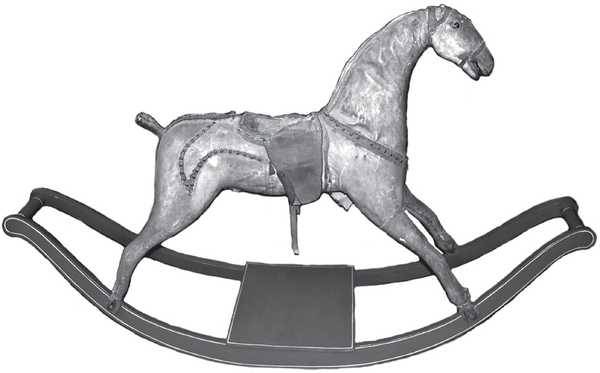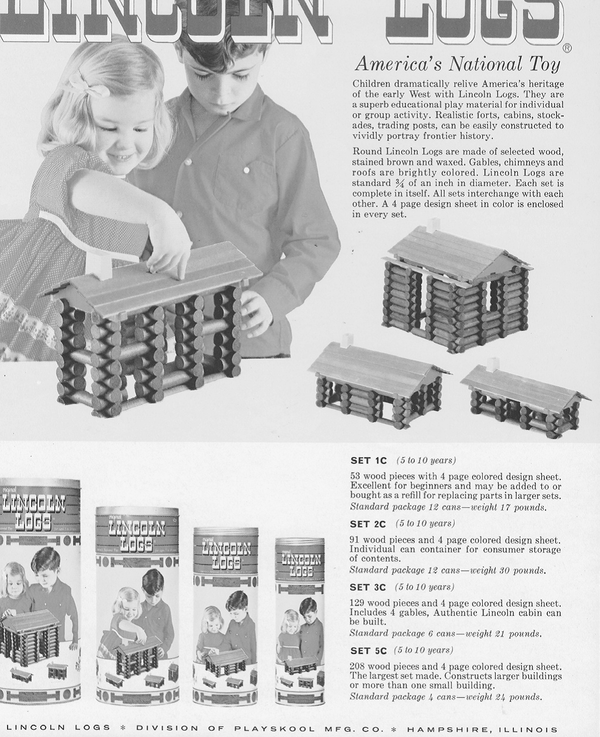Growing up in the 20th century, we all remember that toy we loved the most. The one we would never let out of our sight – an obsession that frustrated our parents. When the holidays arrived, we were excited by the prospect of new toys to add to our collections. But have you ever wondered where your beloved Barbie or your favorite Lego set came from?
From the early 1900s to modern day, we’re looking at the history of some of the world’s most popular toys that emerged from the 20th century, and whose legacy still carries on today.
The Rocking Horse

Back in the Medieval Ages, a toy was created that allowed kids to pretend they were riding a horse by placing a stick between their legs and “riding” around. A fake horse head was attached to the top of the stick. This invention is today known as a hobby horse, and is the earliest rendition of the rocking horse.
The barrel horse was invented in the 16th century. In this version, the hobby horse adopted a barrel for a body that children could sit on, and was supported by four legs made from logs. Unfortunately, the crude construction, built of solid wood with a high center of gravity, meant it fell over easily.
It was with the invention of bow rockers in the 17th century that the rocking horse took its modern shape. Rockers are the curved bottom stretch of wood between the bow and stern of a boat. The same strategy was applied to the rocking horse. As a result, children could now move the toy back and forth.
After a sharp decline in production because of wars in the early 20th century, skilled craftsmen took up the art of the rocking horse again in the mid-1900s, building intricately designed rocking horses. The toy was reintroduced to the market and returned to the spotlight where it has remained to today.
Barbie

In 1959, Ruth Handler was watching her daughter play with paper dolls and noticed her daughter was putting the dolls into adult situations. She pitched the idea of a 3-D adult doll to her husband, Elliot Handler. Together, they co-founded Mattel with Elliot’s business partner Matt Manson, and began a line of toys that would revolutionize the industry.
The public was initially hesitant about Barbie after seeing her first appearance at the 1960 American Toy Fair in New York City. The first doll sold for only three dollars, and came as a brunette or blond teenage fashion model from Willows, Wisconsin. Slowly, the doll gained traction in the industry. One year later, a red-headed doll was introduced to the Mattel line, and by 1980 the first African American and Hispanic Barbie dolls hit the market.
Now, there are over 125 possible careers for Barbie, including an astronaut and President of the United States. Several film and television characters have also gotten their own doll. Today, Barbie dolls continue to fly off the shelves, and should you get your hands on a mint 1959 Barbie, you could potentially sell it for almost $28,000.
Tinker Toys
Tinker Toys were the beginning of what would become a push for construction toys throughout the 20th century. Charles Pajeau of Illinois proposed the idea in 1913. As the story goes, Pajeau was inspired after witnessing children play with pencils, sticks, and empty spools of thread. He created a toy that consisted of several basic wooden pieces, which children could assemble to invent a variety of 3-D objects.
Pajeau presented the idea at the American Toy Fair in New York City in 1914, but no one was interested in his creation. Leaving the fair, he convinced two drugstores in Grand Central Terminal to carry the toy. He created elaborate window displays, including a fan to make a Tinker Toy windmill spin. That year around Christmas time, he hired several people, dressed them as elves, and asked them to play with the toys in a window display in a Chicago department store, and it worked. One year later, over a million sets had been sold.
Legos
Legos are the simple plastic colorful construction toys that, when stacked together, can make some pretty amazing creations.
The Lego Group began creating blocks in 1949, and the modern Lego brick was patented in early 1958. The name “lego” comes from the Danish phrase “leg godt” which translates to “play well.”
By 1978, Lego expanded their line to produce mini figurines that served as characters in the sets they offered. These have since become staples in Lego products. In recent years, movies, games, and amusement parks, and building competitions have helped to build the franchise. In May 2011, Legos were taken to a new height when a Space Shuttle Endeavour mission brought 13 Lego kits to the International Space Station, where astronauts built models to see how they would respond to microgravity. Today, iconic scenes like Harry Potter’s Hogwarts, the Star Wars Death Star, and the Sleeping Beauty Castle at Disneyland have been made into Lego kits for people to collect and construct.
Lincoln Logs

Like Legos and Tinker Toys, Lincoln Logs came to the toy scene when there was a massive increase in demand for construction toys on the market. They were invented by John Lloyd Wright, the second son of the renowned architect Frank Lloyd Wright. John invented Lincoln Logs around 1916, while working with his father in Japan. The design, consisting of simple notched miniature logs that connect to construct buildings, is based off the architecture of the Imperial Hotel in Tokyo that was designed by John’s father.
When John returned to the United States in 1918, he created The Red Square Toy Company and began distributing Lincoln Logs. The toy’s current manufacturer, K’Nex, claims the product was named after Abraham Lincoln, as the former president was born in a log cabin. Others suggest that the current name ‘Lincoln Logs’ is a misspelling of the original name ‘linkin’ logs.’ Regardless, the legacy of Lincoln Logs was solidified in 1999, when the toy was inducted into the National Toy Hall of Fame.
Russian Nesting Dolls
Russian nesting dolls are best known as souvenirs, but did you know they were actually a popular toy in the 20th century? The most traditional style resembles a young Russian woman dressed in traditional clothing with a scarf on her head. The toy consists of a series of dolls progressively smaller in size and stacked inside each other. The number of dolls in a set range from 5 to 30, though a skilled craftsperson can fit much more.
Historically, the dolls are made from lime, birch, alder, and aspen. Their production is relatively simple, and hasn’t changed much over the years. Felled trees are stripped from their bark to the solidest inner rings of the tree. They are kept in open air for two years, until being cut into workpieces for the nesting dolls. Now there are over 400 different types of themed dolls, ranging from cartoons to politics.
Silly Putty

The creation of Silly Putty came as a complete accident. During World War II, an engineer named James Wright was trying to create a substitute for synthetic rubber when he accidentally dropped boric acid into silicone oil. The result was Silly Putty, it would go on to revolutionize the toy industry in the 20th century. However, as cool as Wright’s new “nutty putty” (as he called it) was, the discovery turned out to be no more effective than the synthetic rubber the company was already using.
In 1949, toy store owner Ruth Fallgatter rediscovered Wright’s putty. She showed it to Pete Hodgson, a local marketer, and he instantly saw the potential. He fit bits of it into colorful plastic eggs and began selling them around Easter time. It was Hodgson who gave ‘Silly Putty’ the name that stuck. Throughout the 20th century, Silly Putty grew in popularity with its ability to be easily stretched, broken, and formed into a variety of shapes.
Silly Putty has remained a household favorite, but for reasons other than play. As it turns out, the putty has a series of practical uses as well, like picking up lint, dirt, and pet hair from surfaces, and for its adhesive properties. It has also been used to help alleviate stress and anxiety. This multi-use substance, in its easily recognizable bright shell, was a key player in the history of 20th century toys.
Mr. Potato Head
The original concept of Mr. Potato Head used actual fruits and vegetables, and was first fashioned by George Lerner in 1952 in New York City. Lerner called the toy “make a face,” and used a real potato. However, the use of true fruits and vegetables was dropped when Hasbro took over production in 1964, and began supplying consumers with toy kits containing plastic potatoes.
Over the years, the Potato Head characters have been given a series of accessories like boats, cars, and different outfits that allow Mr. Potato Head to be almost any character. You likely best know him from his appearances in the Toy Story franchise, but what you may not know was that in 1998 Mr. Potato Head had his own show called The Mr. Potato Head Show, though its production was short lived. Today, Mr. Potato Head is featured in the Macy’s Thanksgiving Day Parade in New York City, and can be found dressed in a shirt and tie in Disneyland parks across the globe.

